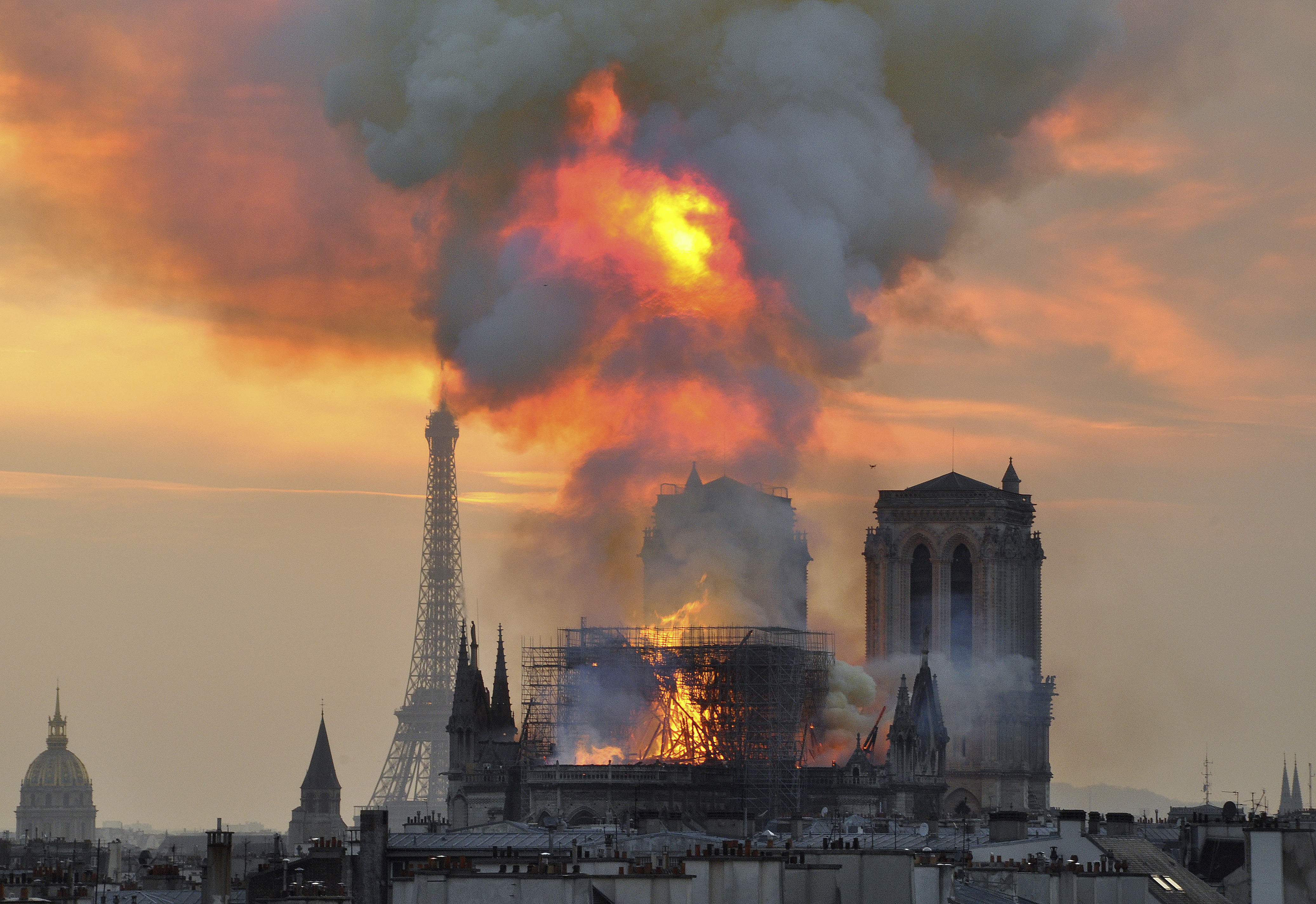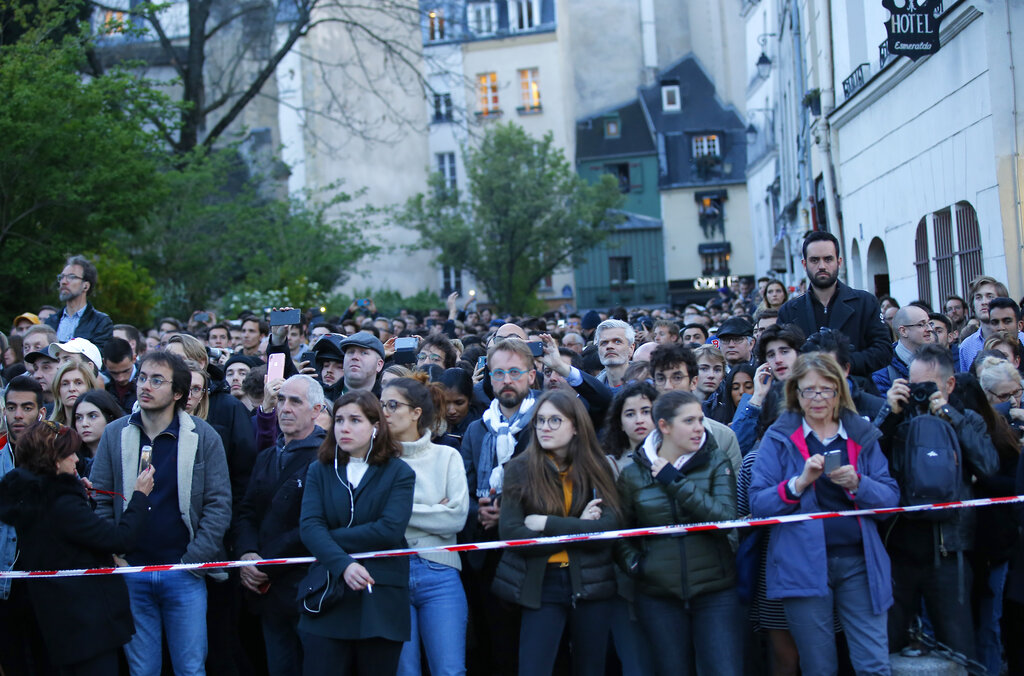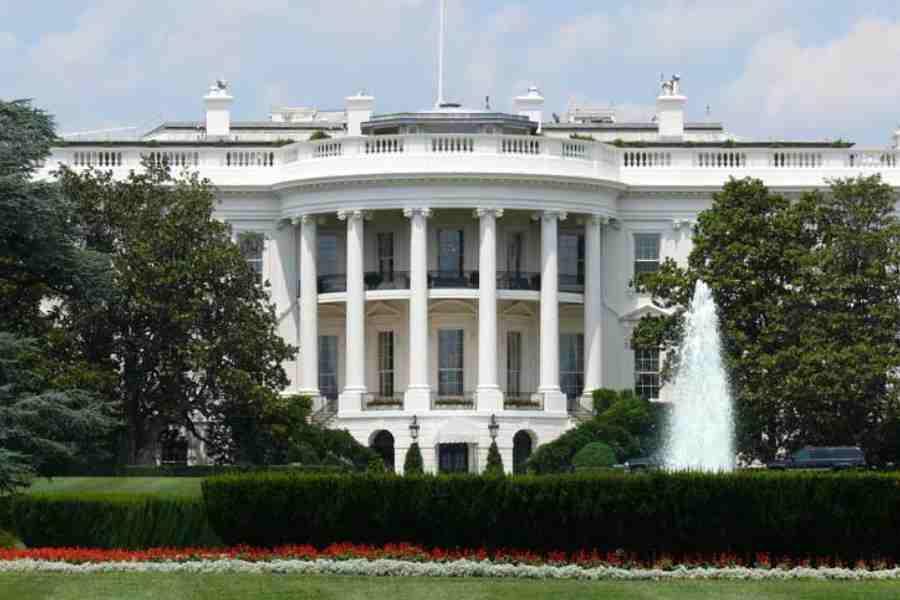Notre-Dame has occupied the heart of Paris for the better part of a millennium, its twin medieval towers rising from the small central island wedged between the storied left and right banks.
Now, France is burning.
The fire at Notre-Dame happened on the day that the country’s troubled President, Emmanuel Macron, was supposed to explain how he intended to address the demands of the “Yellow Vest” movement.
An anguished, restless nation has struggled to cope with the months-long uprising and with the frayed social safety net that spurred the protests. Generations that had come to rely on this social safety net, as a matter of national pride and identity, see it going up in smoke.
On Monday, so was the cathedral, which for centuries has enshrined an evolving notion of Frenchness. The symbolism was hard to miss.
This fire is not like other recent calamities.
When flames killed dozens trapped in Grenfell Tower in London, it exposed a scandalous lack of oversight and a city of disastrous inequities. When a bridge collapsed in Genoa, Italy, also taking life, it revealed the consequential greed of privatisation and a chronic absence of Italian leadership. When the National Museum of Brazil burned down, also through unconscionable government neglect, it wiped a tangible swath of South American history from the face of the earth, incinerating anthropological records of lost civilisations.
Notre-Dame, where no one died, represents a different kind of catastrophe, no less traumatic but more to do with beauty and spirit and symbolism.
Visited by some 14 million people a year, the cathedral, established during the 12th century, is the biggest architectural attraction in Paris. It is an emblem of the old city — the embodiment of the Paris of stone and faith — just as the Eiffel Tower exemplifies the Paris of modernity, joie de vivre and change.
Not that Notre-Dame hasn’t changed. Scarred repeatedly, it is a kind of palimpsest of French history.
Finding its Gothic architecture outmoded and ornate, Louis XIV destroyed much of the church’s interior and swapped it out for one he regarded as more classically tasteful.
During the Revolution, insurgents ransacked the cathedral, plundering treasures and decapitating statues of Old Testament figures on the building’s facade, which they mistook for portraits of French kings. They rededicated Notre-Dame to the Cult of Reason, melting its great bells.
By the time Victor Hugo’s Hunchback of Notre-Dame imprinted the cathedral in the minds of countless readers, the building was pretty much a wreck. Hugo called it a “vast symphony in stone” as “powerful and fecund as the divine creation”, and despaired that it had come to be an object of ridicule.
The popularity of his book helped reposition Notre-Dame as a symbol of French identity, inspiring its restoration by 19th-century architect Eugène Viollet-le-Duc.
Viollet attempted to restore the church’s Gothic character, undertaking a vast project of architectural reinvention and private imagination, redoing the figures on the facade, recreating stained glass windows and adding many ornate touches, including to the spire that just burned down.
When the spire collapsed, all those layers of history seemed to evaporate.
Through its many transformations, Notre-Dame has remained “the great stage where great events in France have been rehearsed and repeated for centuries”, as historian Robert Darnton has put it — where the cathedral’s archbishop blessed the flags carried by French armies going off to war, before crowds of weeping parents and spouses. Where Parisians wept on Monday, as they also did along the banks of the Seine and at the plaza of the Hôtel de Ville.
Back in 1871, the Paris Communards, their revolt dying out, adopted a scorched-earth policy and burned down the Hôtel de Ville, with its paintings by Delacroix and Ingres. So the building from which Parisians watched the fire is a reconstruction.
The cathedral had been undergoing an extensive restoration. Gargoyles were broken, balustrades had collapsed, flying buttresses were stained by pollution. Water had seeped through cracks in the spire’s wood frame.
What a sad paradox it would be if it turns out that the restoration somehow accidentally led to the conflagration. It seemed, from early reports, to be the wood in the spire that accelerated the blaze, causing most of the roof to collapse.
Promising the French people he would rebuild Notre-Dame, which he called “the epicentre of our lives,” President Macron cancelled his speech about the Yellow Vests. He still plans to proceed with his proposals.
France today is wrestling with how to reinvent itself for a new age.
Considering the great sweep of time, the current Yellow Vest uprising will no doubt come to seem like just another data point in the long evolution of a nation that has survived setbacks and returned, again and again, to an abiding glory.
In his landmark television series Civilisation, standing before Notre-Dame, art historian Kenneth Clark asked: “What is civilisation? I don’t know. I can’t define it in abstract terms — yet. But I think I can recognise it when I see it.”
He turned towards the cathedral: “And I am looking at it now.”
Someday, the fire of 2019 may fade into the history of Notre-Dame. It may take many years to repair the damage.
But the great cathedral will reinvent itself, too.













